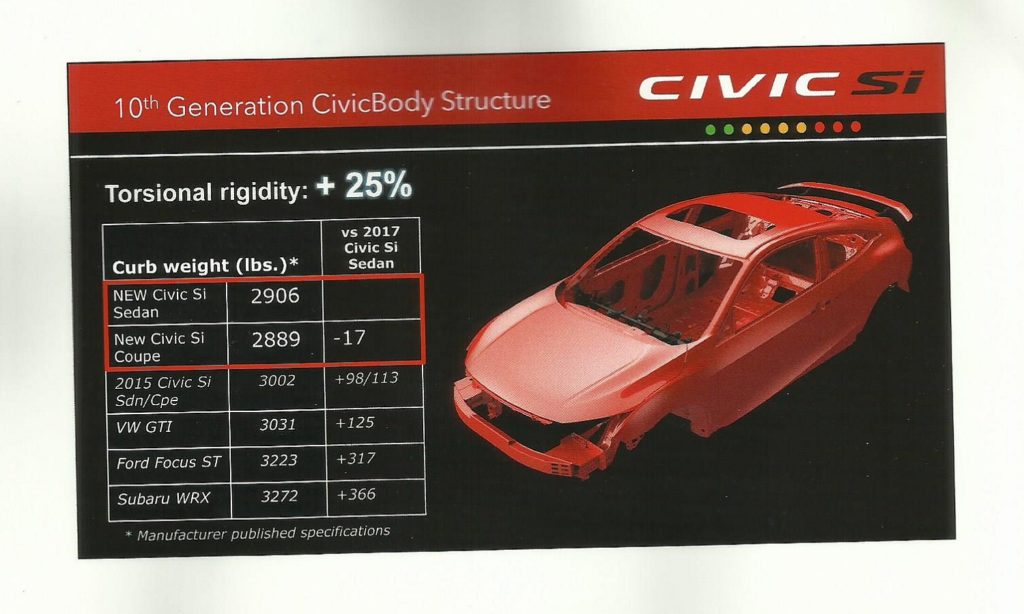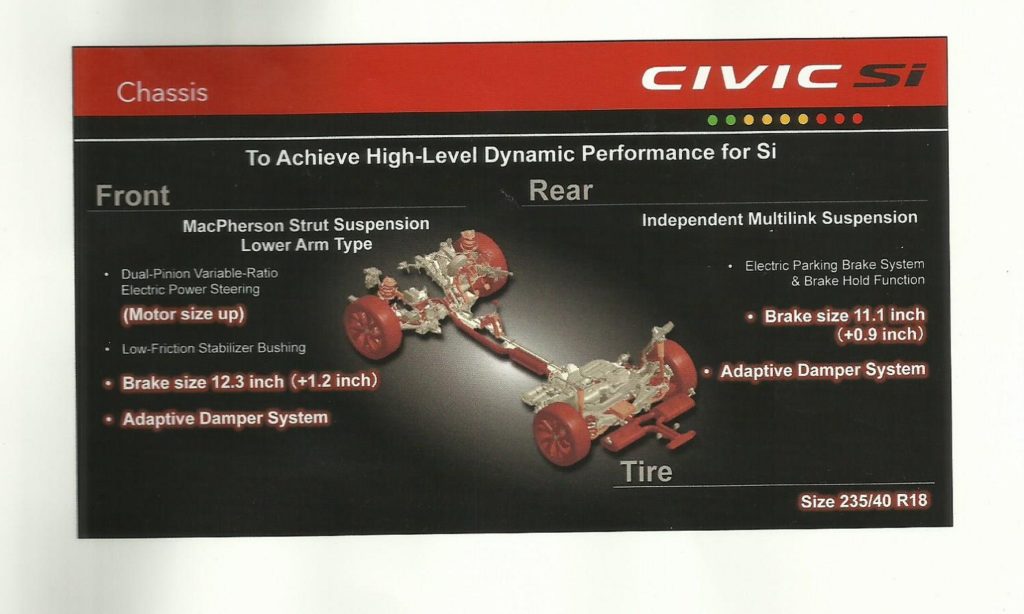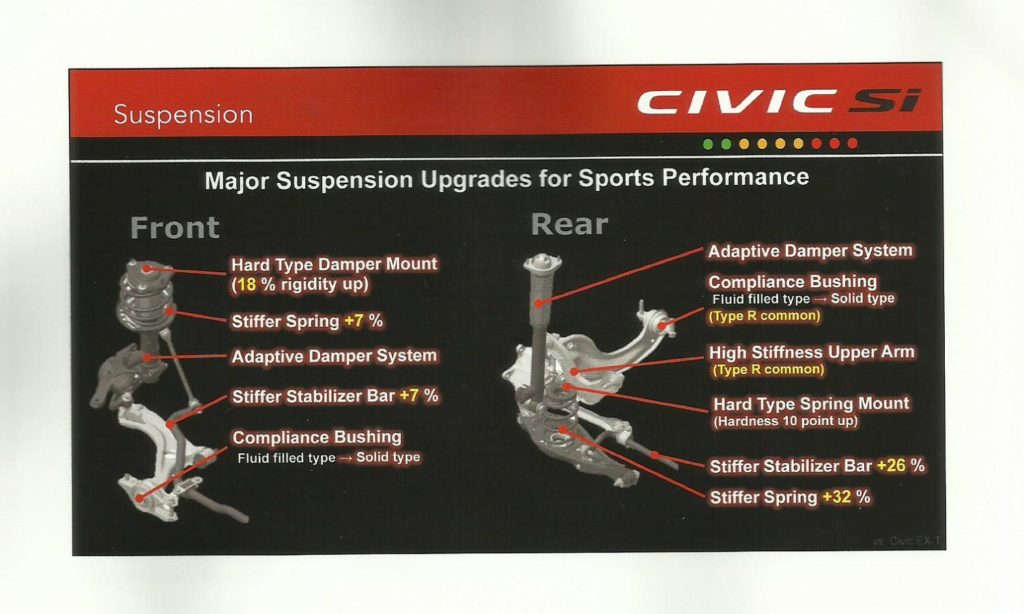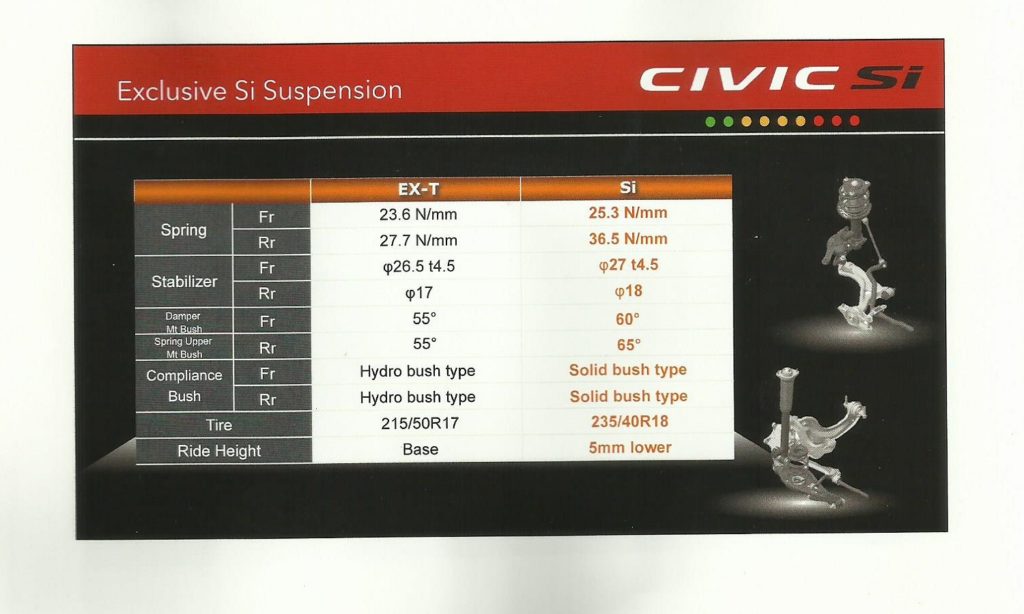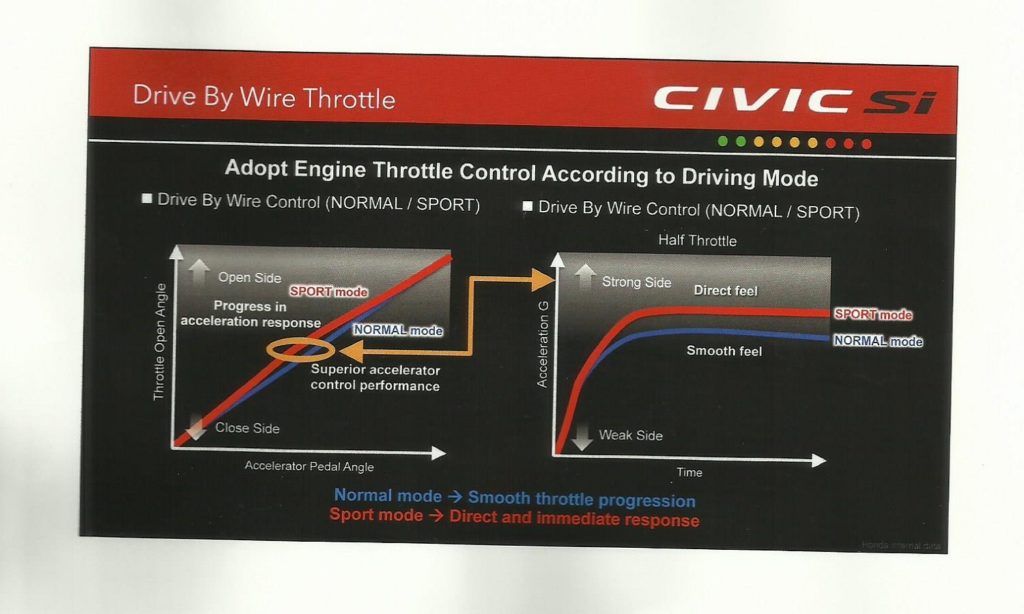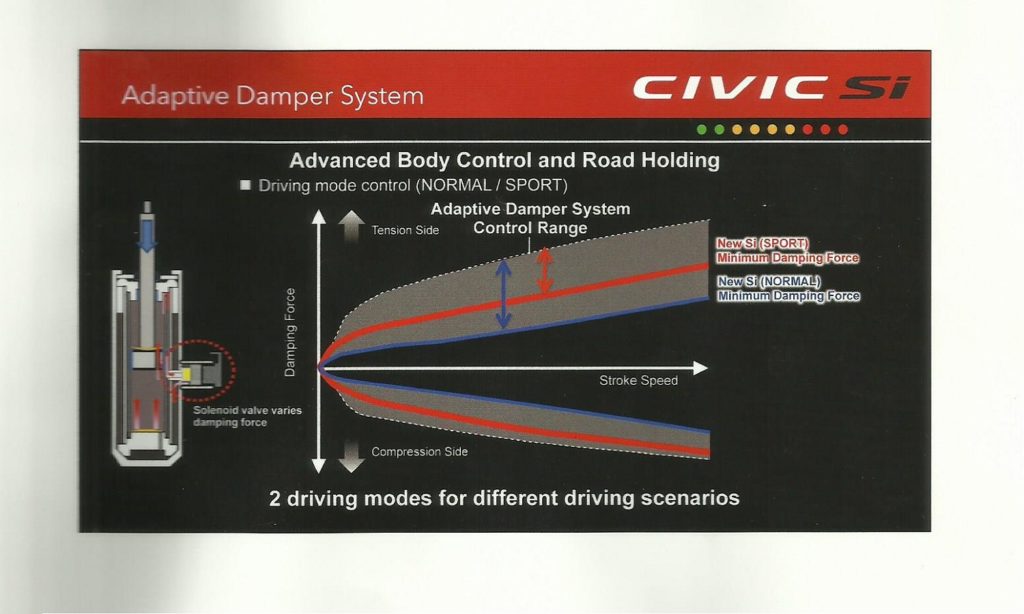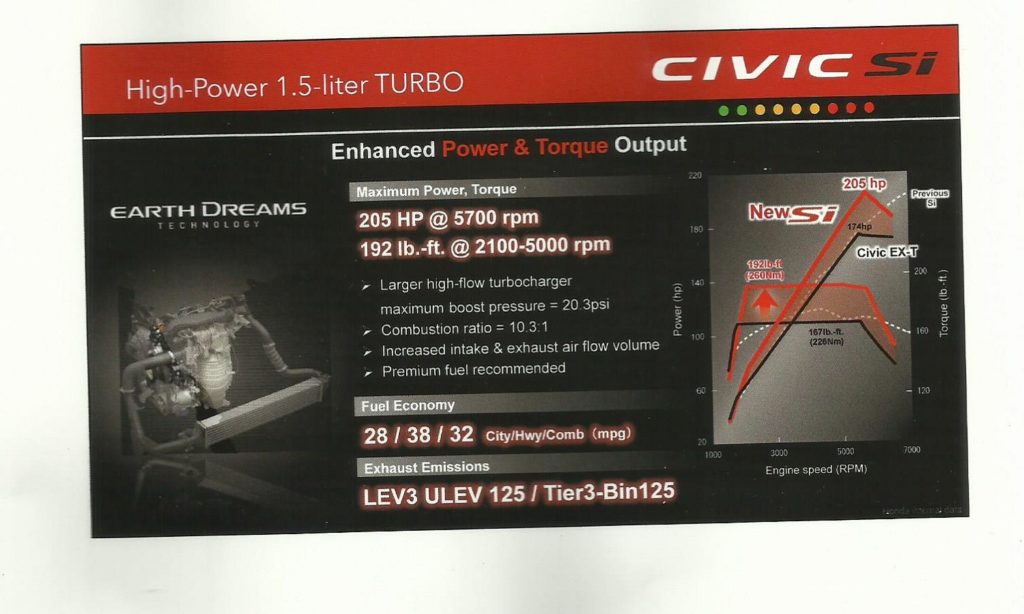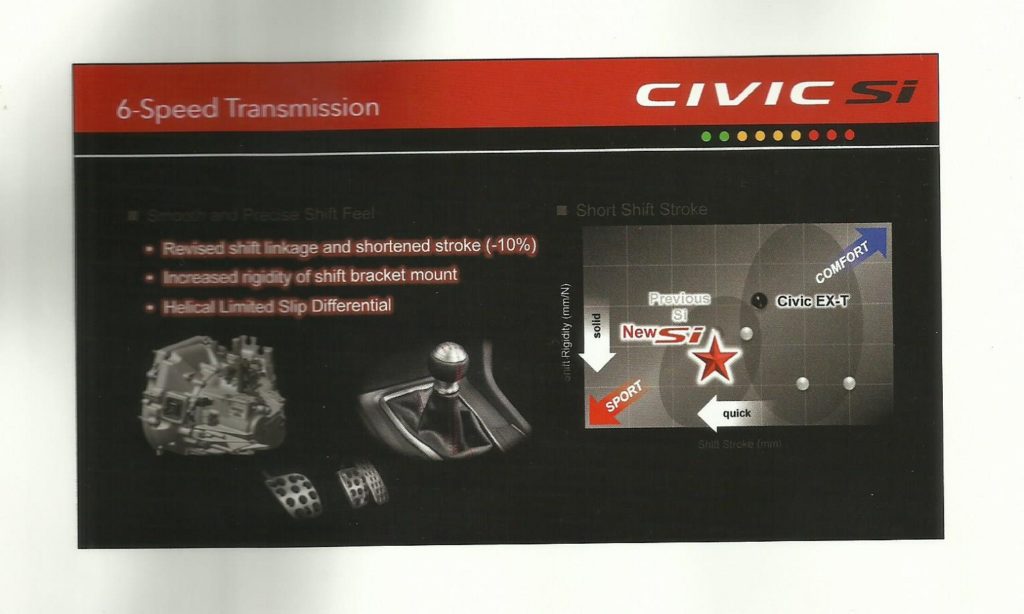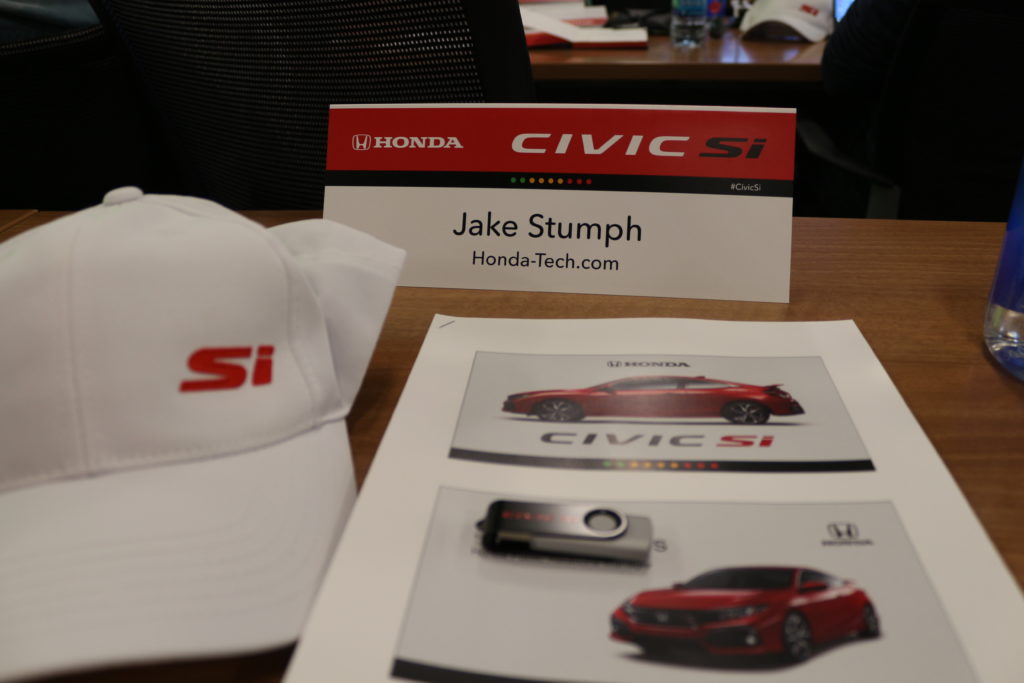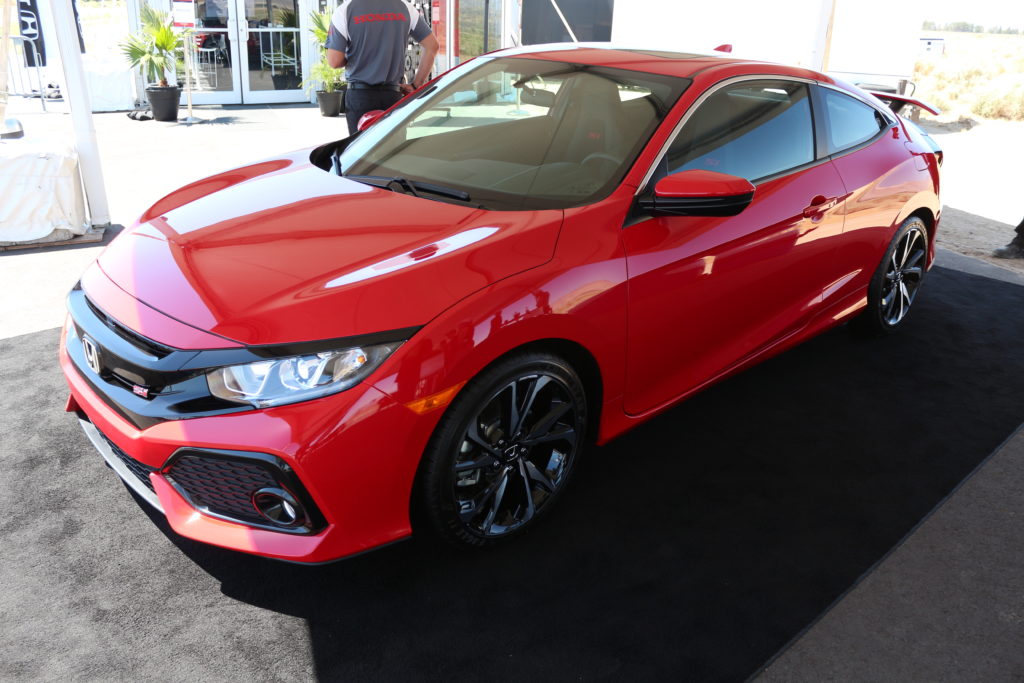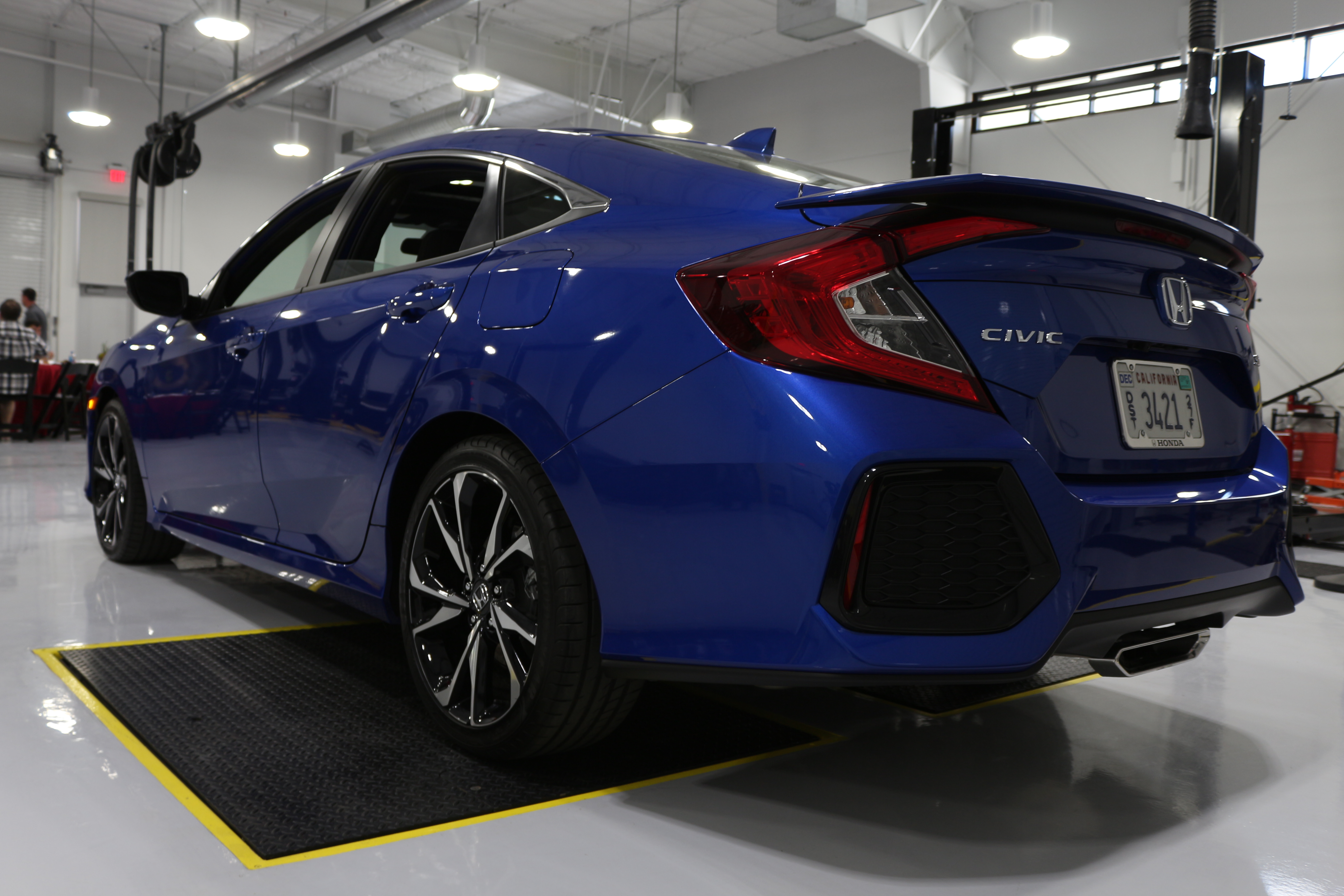2017 Honda Civic Si Review: The Best Si Ever Made
How it’s so good: a technical debriefing (Honda Nerds, take notice).
When I first covered the pricing announcement for the new 2017 Si, I noted how impressive it was that Honda was giving out a lot of technical details. Well, the nerdfest continued at the launch. After the track test, we were scurried inside a conference room and bombarded with facts and figures. Amazingly, some people tuned out during this, but they had my full attention, I love the details, and I figure, some of you will, as well.
Here are scans of the technical data Honda presented, in all of its nerdy glory. [Click the images for full-size resolution and follow along with my rant.]
So many juicy details, so little time. I’ll try to keep this piece below 10,000 words, but there’s a lot to take in.
First off, the 10th gen chassis sees a torsional rigidity increase of 25% over the 9th gen [Picture #1]. That in itself is huge, and certainly is a big part of the equation as to why the car feels so good on track. The other big takeaway: they reduced the curb weight by about 100 pounds from the 9th gen. Coming in at a hair under 2,900lbs, the Civic is the featherweight in the sport compact segment. That’s some 300lbs lighter than the Focus ST. Dynamically, less weight improves every aspect of performance: accel, decel and cornering, so this is fantastic news.
To put in perspective how impressive this diet is, note that dimensionally, the new Civic Si sedan is 3.4″ longer than the 9th gen, with a 1.2″ wheelbase stretch. It’s also an inch lower, and 1.3″ wider, giving it a very long, sleek appearance from the rather upright 8th and 9th gen Si sedans. A lot of this visual stretch is in the tail end of the car. The sedan has a cavernous trunk. For those curious, the new Si coupe is 1.4″ shorter than before, but featuring a massive 3.1″ wheelbase stretch. The new Si coupe is rakishly short, with much shorter, more aggressive overhangs due to that increase in wheelbase. From there, it is 0.3″ lower than before, with the same 1.3″ track width stretch that the sedan features.
As you would expect, almost every suspension component is upgraded over the standard Civic, and the new Si even shares some parts with the upcoming Civic Type R [Picture #2, 3 and 4]. The massive increase in rear roll stiffness, via spring rate, anti-roll bar size and other chassis components, reduces understeer bias coming from the regular car. Crucially, the hydro-filled bushings and voided bushings used in the standard car are replaced with solid rubber all around, reducing deflection, allowing the suspension to work more efficiently, and improve overall sharpness and response.
For the first time ever, the Civic Si features a “Sport” mode button that changes the calibration of the electric power steering, dampers, and throttle response [Picture #5, 6 and 7]. On track, I toggled between Sport mode on and off, and there is an appreciable difference. The way that the steering weights up is the biggest initial difference. However, what actually ends up being the most important are the dampers.
Let’s talk shock: the 2017 Civic Si is the least expensive car on the market with adaptive dampers [Picture #8]. Yup, a $24,775 sport compact has two-mode adaptive dampers as standard equipment, and by god do they work well. Honda actually provided a shock dyno plot showing the compression and rebound characteristics of the shocks used by the new Si, and what the difference is between Normal and Sport modes.
It’s big on paper, and bigger in the real world. In Sport mode, a solenoid opens up in the shocks, altering the valving, and available fluid in the dampers. Looking at the graph, you can see that both compression and rebound are affected by Sport mode, offering a sharper initial ramp up, before settling into a linear rate of bump and rebound. This can clearly be felt on road and track, with the cars initial responses to pitch, yaw and roll being much quicker. I personally preferred to leave the car in Sport full time.
Why did you save the engine for last? It’s what we all actually care about.
I know, it’s what you, me and really, everyone else, need to know: is the turbocharged engine worthy of the Si badge?
You bet your sweet ass it is. The L15B7 as seen in the new Si is different than the one found in the Civic EX-T and Sport. The turbocharger is the same MHI TD03 housing, but the impeller is different, designed to flow better at high RPM. The head is different too, with sodium-filled valves to reduce temperatures. And, though specifics weren’t mentioned, the head apparently flows better, and the block is more rigid than the standard L15 turbo.

Check out the power chart on Picture #9, the Si loves to rev. In fact, it charges hard to it’s 6,500RPM redline. It feels like it could make power at 7,000. The freneticism and urgency that defined previous Civic Si engines is still there, the difference is that it’s now assisted by 20 psi of boost. It doesn’t scream like a K20 entering the stratosphere at 8,300RPM. Instead, it growls as the boost comes on and the engine claws it’s way through the powerband.
As per Honda, in this state of tune, the Si is making peak torque from 2,000-5,000RPM, so it has grunt down low that even the K24 couldn’t match. However, Honda tuned the power curve to try and be pretty linear, so while it will pull you along at 3,000RPM, it wants to be up the rev range, and definitely rewards drivers who hustle the car. You can’t deny it’s prowess at progress, either: by all performance metrics, this is the fastest Civic Si we have ever seen.
It seems a bit muffled, but in terms of decibels, it’s making about the same amount of noise as K-powered Si of the past, inside and out. It sounds pretty hearty in the mid-range, with a deep rumble around 4,000RPM. On the outside, at full throttle you can hear the 1.5L four cylinder engine buzzing along as it comes towards you, and as it passes you hear the distinct turbo wastegate noise coming from the exhaust.
Picture #10 is indicative of changes made to the transmission. Of course, the Si has a helical limited-slip differential, which, with the turbocharged torque, is awesome at helping the new Civic Si claw it’s way out of corners. Beyond that, shift throws are shortened 10% from the Civic EX-T and Sport, and I’d guess a heavier duty clutch as at work. It’s still featherlight, but heavier than what comes in the Civic Sport 6-speed manual car I drove.
continue…


